Houston Zoo Bird Staff Saving Wildlife Part II
This blog was written by Kasey Clarke, a member of the Houston Zoo’s Bird Department. Kasey received a Staff Conservation Fund grant from her coworkers at the Houston Zoo to carry out a wildlife-saving project for birds in the Mariana Islands (a chain of islands in the western North Pacific Ocean). We will be posting a series of blogs as Kasey documents her work overseas.
The process described below is part of the Mariana Conservation Program to relocate local bird species to neighboring islands that do not have the invasive brown tree snake, an introduced species that preys upon native birds.
Field days are long and hot. In this blog entry I will walk you through a typical day in the field. With lots of photos!
We wake up at 4:00 am to be ready to head out to the field by 4:45 am. We get to our site at 5:15 am and unload the gear for the day and start opening the mist nets (a net used by ornithologists and biologists to safely gather birds for research and conservation purposes). At 6:15 all the nets should be open and then we wait. Nets are checked every 15-20 minutes for birds. All non-target birds (those birds we are not relocating as part of this conservation effort) are released immediately.
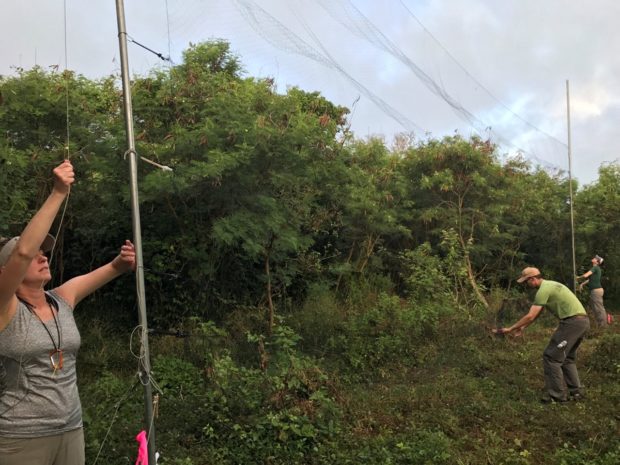
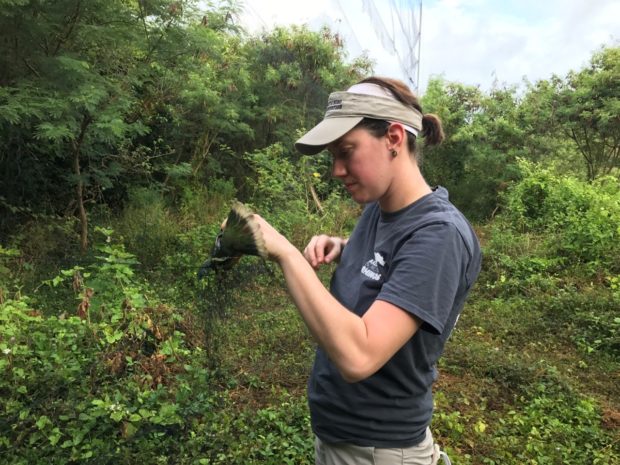
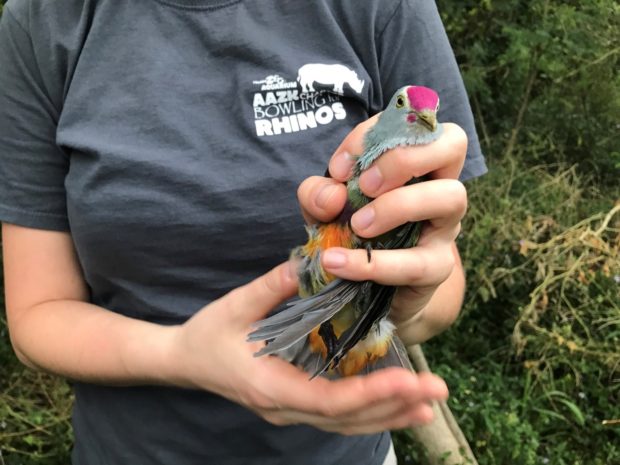
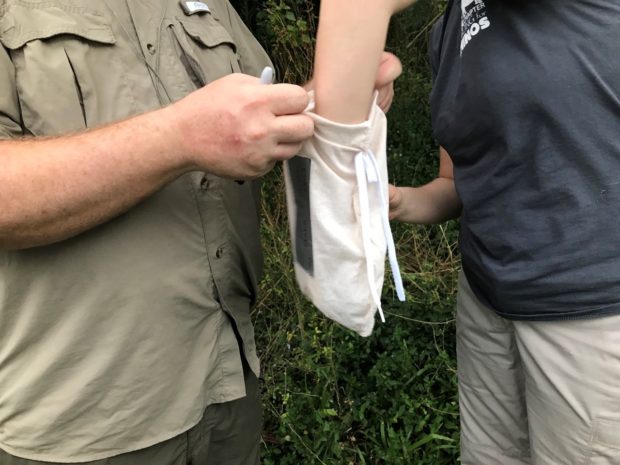
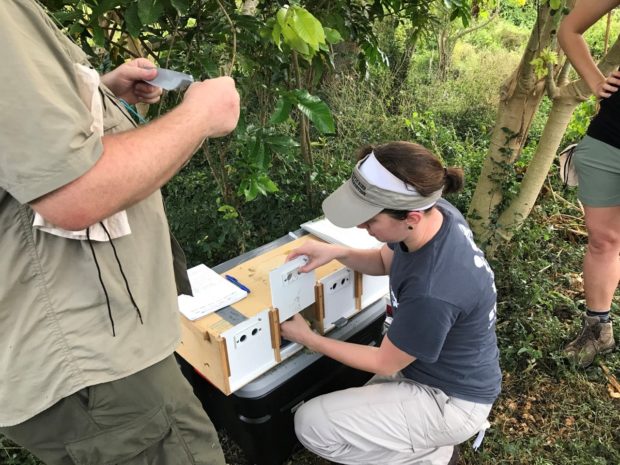
There is a second field site for a different bird species, the Rufous fantails. The nets used for this species are not as tall and the mesh is also smaller. The fantails weigh about 8 grams while doves weigh about 75 grams.
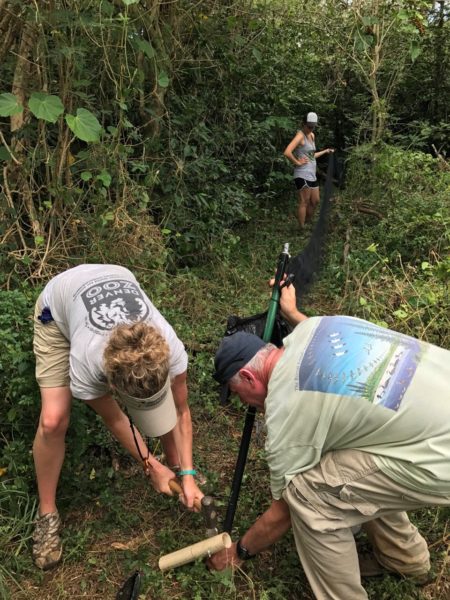
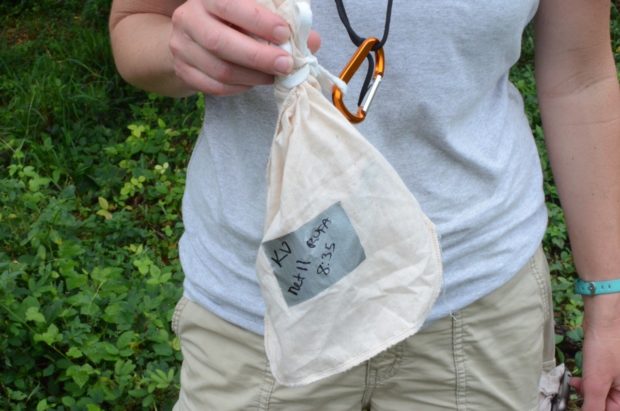
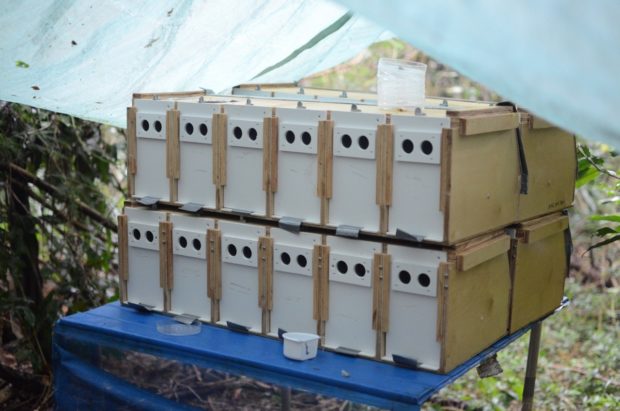
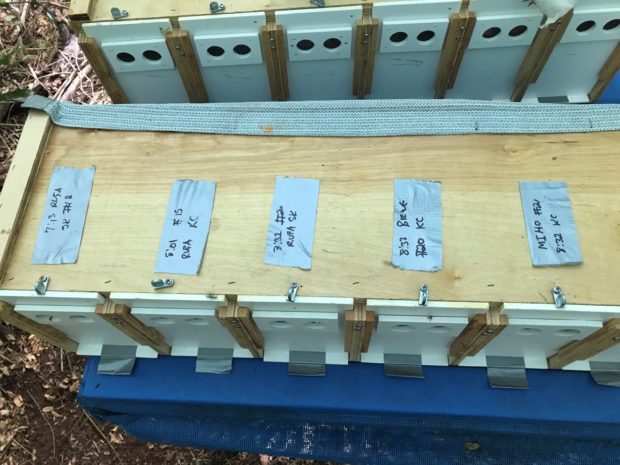
Flies are then collected and put in the box for the bird to eat. The fantails are very active birds and need to eat constantly. We catch flies by placing buckets over a tray of fish. If only you could smell through the internet!
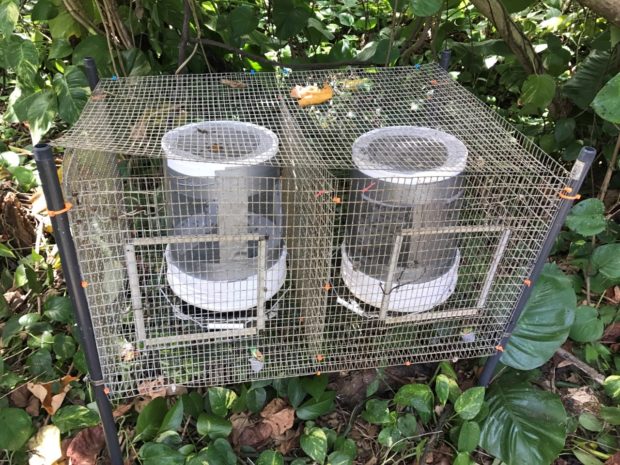
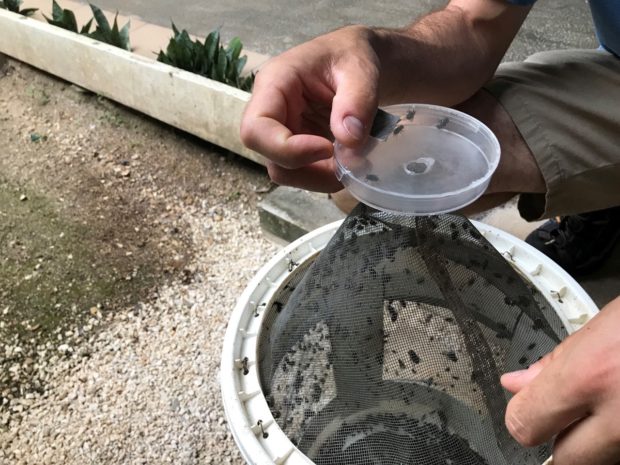
Someone makes runs out to both field sites to pick up birds every few hours to take them to the holding room.
At about 4:45 pm we will close up the nets and head back into town.
Next time I’ll tell you what happens to both this fantail and dove when they get to the “bird room”!
